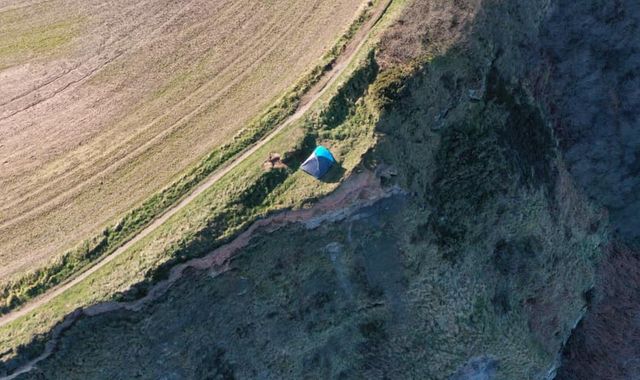HMS Queen Elizabeth: Navy’s new flagship a true feat of engineering
Written by News on 17/08/2017
My first introduction to the awe-inspiring power of the Royal Navy’s carrier force came aged just 10 years old, on a visit to see HMS Ark Royal R09 in Edinburgh.

It was the very last of Britain’s more traditional carriers, those that use catapults to launch fixed-wing aircraft and arrester wires to catch them on landing – the model still adopted today by the US and France.
For a young lad, spending the day on board a 40,000-ton naval vessel was mind-blowing. I’ve been fascinated by aircraft carriers ever since.
Four decades on came a chance to rekindle some of that boyhood excitement – and do a little journalism as well.
As HMS Queen Elizabeth steamed into the English Channel ahead of her first visit to her home port of Portsmouth, I boarded a Royal Navy Merlin helicopter to join the ship.
It is truly hard to appreciate the enormous scale of Britain’s new aircraft carrier, until you are face-to-face with her.
At more than 65,000 tons and almost 300 metres long, she is a true Leviathan.
Our helicopter, one of two, landed on the ship’s four-and-a-half acre flight deck.
There is room for many more. In times of high crisis, Queen Elizabeth can accommodate more than 50 aircraft, a mix of fast jets and helicopters.
Critics who complain the Queen Elizabeth is a giant carrier with no aircraft are badly informed.
The fact is the Royal Navy’s biggest ever warship is still on sea trials. It will be another three months at least before her builders hand her over and she is commissioned into the Royal Navy.
There were about 1,000 people on board the carrier for her trip into her home port, a mix of the ship’s company, air crew and their support and a couple of hundred contractors.
There was a real palpable sense of excitement among those embarked for this major milestone in the UK’s return to carrier air power.
Captain Jerry Kyd told me the military are not usually emotional people, but some on board have been working on this project for the last four or five years.
This was the culmination of a massive feat of engineering which has seen parts of the carrier constructed at yards across the UK and assembled at Rosyth, in Fife.
For Captain Kyd, the carrier’s entry into Portsmouth had even more emotional resonance.
He was in command of the Invincible class Ark Royal carrier when it made its final homecoming to Portsmouth seven years ago.
At more than three times the size of HMS Ark Royal, Queen Elizabeth had a much tighter fit to enter Portsmouth.
It was a manoeuvre not for the faint-hearted, but the crew here had full confidence in their vastly experienced captain.
With a wry smile, Captain Kyd tells us that when Henry VIII first chose Portsmouth for his Navy, they were sailing ships the size of the Mary Rose.
No wonder the Navy has spent months dredging millions of cubic meters of mud from the seabed at the entrance to the port.
This modern-day symbol of Britain’s maritime power, named after Henry VIII’s daughter, entered the port ever so slowly – a journey she will make many times in her 50 years of service for the Royal Navy.
(c) Sky News 2017: HMS Queen Elizabeth: Navy’s new flagship a true feat of engineering





